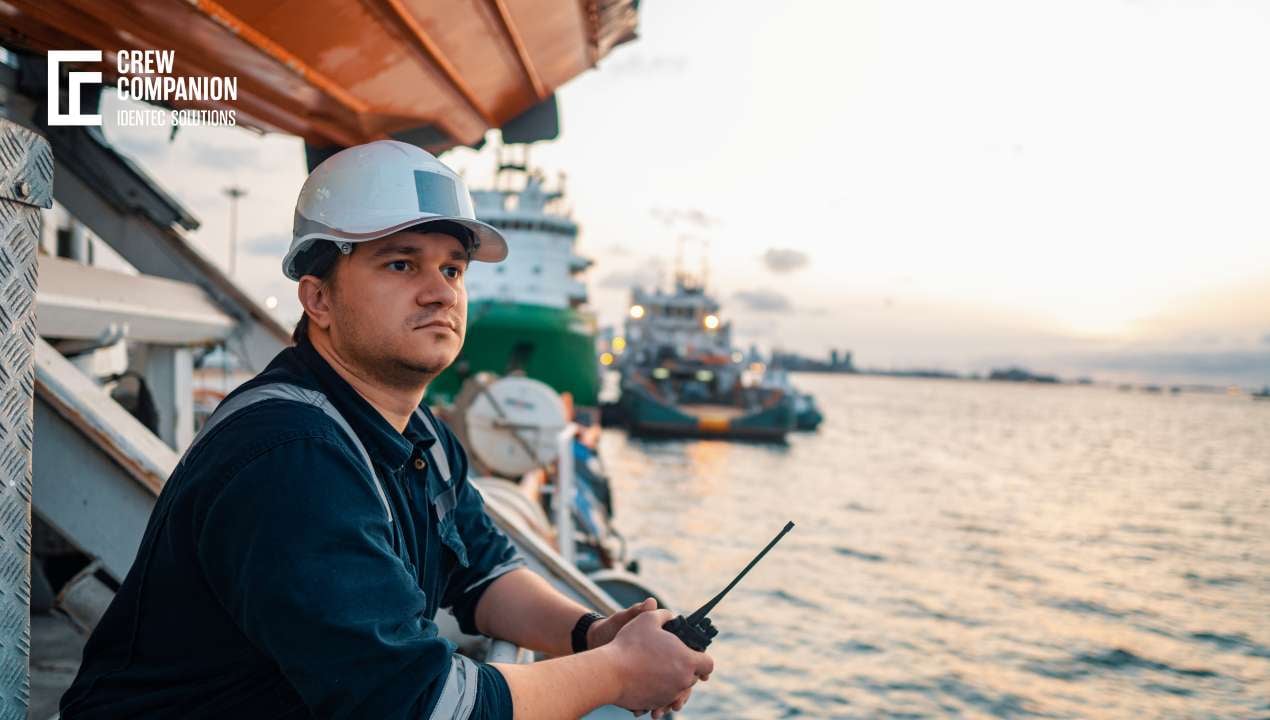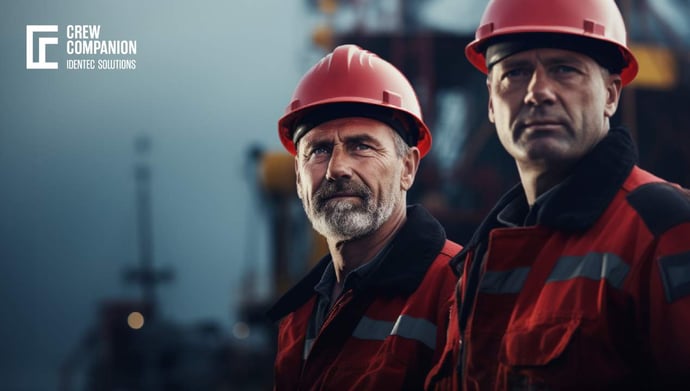Emergency Response Offshore - Are you prepared?
| Written by Mark Buzinkay
As offshore structures are placed further from shore and in more challenging environments, personnel in the renewable energy industry face an ever-increasing level of risk. To mitigate these risks, emergency response must be readily available, and a focus on well-practised processes and procedures through regular drills and exercises is essential for effective command and control of events and responses.
This articles introduces into the different roles in an offshore emergency procedure and what their duties are - based on the example of the HM Coast Guard.

No video selected
Select a video type in the sidebar.
Effective emergency planning is dependent on prior preparation. Emergency plans should be developed in collaboration with emergency responders, neighboring offshore installations and based on HSE standards. The utilization of “area” response plans may prove to be a suitable and effective way to manage emergencies in a wider group of installations. However, these plans can only be produced through the sharing of information, a collective understanding of risk exposure, and the level of mutual support required.
The life phases of an emergency
To truly grasp the importance of command and control in emergency situations, we must first examine a complex offshore incident. These situations can unfold rapidly or slowly over the course of hours, and involve numerous parties. While the principles of incident response - including command, control, and alerting - remain constant, major incidents may require some steps to be skipped.
When faced with unexpected incidents, the first instinct is to save lives. However, it's important not to ignore the crucial step of alerting emergency services. Those who may be called to respond in an emergency should be trained to assess, communicate and triage effectively.
The Uncertainty Phase
The Uncertainty Phase denotes a situation where the safety of an aircraft, marine vessel, or the individuals aboard them is uncertain. An offshore renewable example could be a Service Operation Vessel experiencing power loss while anchored with a worsening weather forecast. By declaring an Uncertainty, emergency services can adjust their readiness level and begin planning for a potential incident without committing resources. It should be noted that SAR resources will not be deployed during the Uncertainty Phase.
The Alert Phase
In the Alert Phase, also known as declaring a PAN (or PAN-PAN), there is a sense of unease regarding the safety of an offshore structure, aircraft, or marine vessel and its occupants. Emergency assets may be dispatched to the area as a precautionary measure if there is a possibility that the situation may worsen. For instance, a Crew Transfer Vessel that is taking on water but is thought to be under pump control. SAR resources may be called upon if the situation has the potential to escalate to the Distress phase.
The Distress Phase
The Distress Phase, also referred to as a MAYDAY call, is initiated when there is a high level of certainty that a vessel, aircraft or person is in grave and immediate danger, and requires urgent assistance. An immediate proportional response will be activated depending on the number of people at risk and the level of danger they are exposed to.
As an incident unfolds, the master, aircraft captain, or Duty Holder's representative may upgrade or downgrade the Emergency Phase in consultation with the Search and Rescue Mission Coordinator (SMC). However, it is the responsibility of the SMC to keep all participating and responding units informed of the relevant Emergency Phase.
An incident can begin in various ways, such as through visual observation of an explosion or by noticing the absence of a regular activity, like a missed radio call. It can also be triggered by an automated alert, such as a Personal Locator Beacon activation signaling someone in the water.
In an emergency situation, Emergency Position Indicating Radio Beacons (EPIRB) and Personal Locator Beacons (PLB) can be a lifesaver. These beacons can send out a distress signal that can be detected by satellites, and pinpointed by vessels or aircraft equipped with direction finders. The emergency transmission can also include GPS coordinates, which can greatly assist SAR services in preparing for and executing a rescue mission. The best part is that these beacons can work without any human interaction, making them an essential tool for offshore renewable operations.
To ensure the effectiveness of emergency beacons, it is crucial to register them and keep their information up to date. Operators looking to purchase such beacons should seek advice on current requirements from the MCA as a first step.
Learn more about HSE standards in the North Sea ...
Alerting Procedures
When reaching out to HM Coastguard, be sure to provide comprehensive details such as:
- Identity of casualty (name of installation, I.D. number, call sign, flag state, ...)
- Description of casualty (physical description, owner /charterer, cargo carried, turbine status e.g. operational, blades feathered and pinned)
- Position (Latitude/longitude + range and bearing from land or sea mark reference point e.g. ‘5 miles northwest of Richmond watchtower’)
- Situation (type of message, e.g. distress / urgency, date / time, nature of distress / urgency, perceived threat to installation / life / limb e.g. fire, collision, medical)
- Number of individuals at risk and their whereabouts
- If assistance required
- Sea state and weather on scene
- Initial actions taken
- Site Operations Manager’s intentions
- Available on-scene resources
- Status of helicopter facilities
Learn more about Crew Companion, an emergency response system monitoring your crew...
It is crucial to contact HM Coastguard as soon as an incident occurs, even if assistance is not immediately required. Early alerting enables them to monitor the situation and provide support when necessary. Delaying until the situation worsens could cause a needless delay in SAR units arriving on the scene.
During an incident where national assistance has been requested by the Duty Holder and/or a Distress or Urgency situation is declared, national SAR assets or vessels responding under SOLAS obligations will most likely find themselves operating alongside assets provided by the site. Those assets will be coordinated at the scene of the incident in accordance with the following roles:

Search and Rescue Mission Coordinator
In the event of an actual or perceived emergency situation, the Search and Rescue Mission Co-ordinator (SMC) takes charge of coordinating the response effort. According to IAMSAR guidelines, every incident must have a designated SMC. For offshore renewables incidents, the coordinating HM Coastguard Operations Centre assigns a designated officer as the SMC.
The Search and Rescue Mission Co-ordinator (SMC) plays a critical role in coordinating the response effort, gathering crucial information such as available assets and weather conditions on scene. Working closely with those in distress and emergency responders, the SMC determines the most effective rescue plan for each unique emergency. With regular updates on the progress of the SAR plan, all stakeholders and involved parties can ensure a cohesive and coordinated response, ultimately leading to the safety and well-being of those in need.
In case of prolonged incidents, the Search and Rescue Mission Coordinator (SMC) may transfer their role to another designated officer, and such handovers will be documented. Additionally, the SMC is responsible for appointing or confirming the roles of the On Scene Coordinator (OSC) and/or Aircraft Coordinator (ACO). The OSC is a designated individual who is responsible for coordinating search and rescue operations within a specific area.
The On Scene Coordinator (OSC) plays a vital role in executing the SMC's emergency response plan on-site. They are appointed by the SMC in incidents that require coordination of multiple resources, are complex, or extend over a long duration. The OSC coordinates available resources, relays the SMC's instructions to all units, and serves as a communication link between all involved parties. Additionally, the OSC provides regular situation reports (SITREPS) to the SMC on offshore incident progress.
The On Scene Coordinator (OSC) is typically assumed by the first competent asset that arrives at the scene or is already present. However, this should be confirmed with the SMC as soon as possible. In cases where a more suitable asset is available, such as a nearby vessel or installation, the SMC may appoint them instead. It is crucial for the SMC to inform all participants of the appointment of the OSC and their identity as soon as possible, and any subsequent changes should also be communicated. Any large asset within the site, such as a hotel ship, Service Operation Vessel, or manned platform, can potentially take on the role of OSC and should be well-versed in their responsibilities.
Learn here more about Emergency Response Software...
Aircraft Co-ordinator (ACO)
The Aircraft Coordinator (ACO) is responsible for coordinating the activities of multiple aircraft SAR operations in support of the SMC and OSC. In the case that two or more aircraft are expected to respond to the incident, the ACO will be appointed. The main objective of the ACO is to ensure the safe and effective management of responding aircraft.
While the Search and Rescue Mission Coordinator (SMC) is responsible for appointing the Aircraft Coordinator (ACO), there may be cases where the responsibility is delegated to the UK ARCC after discussion. Nonetheless, the SMC must promptly inform all participants of the appointment and identity of the ACO, as well as any changes to the role. The ACO is crucial in ensuring the safe and effective management of responding aircraft in support of the SMC and On Scene Coordinator (OSC).
Duty Holder Command, Control & Coordination Arrangements
In establishing an effective emergency response organisation, Principal Duty Holders should take the following points into account:
- It is crucial for a Principal Duty Holder to appoint one person with clear authority to take charge of the emergency response and make decisions. This ensures a coordinated and effective response to any emergency situation.
- It is essential for those in the command structure to have clearly defined roles and responsibilities that are easily understood to ensure a coordinated and effective response to any emergency situation.
- It is imperative for the emergency response organization to have contingency plans in place for instances where primary personnel are not present or inaccessible.
- Each member of the emergency response team must possess the necessary skills and expertise to fulfill their role effectively and efficiently. Demonstrating their capabilities is crucial in ensuring a coordinated and successful response to any emergency situation.
The Importance of Continuous Training and Technological Integration
Besides well-defined emergency procedures and clearly defined roles, incessant training for the integration of advanced technologies will ensure the offshore emergency response is fully prepared. Routine drills, which would mimic activities in or out of scenario-based exercises, will provide assurance that all members of the team, from the On-Site Coordinator to the Search and Rescue Mission Coordination, are instantaneously ready to respond appropriately in time and with efficiency against situations of high pressure. These training exercises should be done in out-of-control weather, failures of equipment, or a sudden health emergency to improve the preparedness of personnel. It is important to have hands-on experience in honing decision-making, on-site and remote team coordination, and minimizing response times at critical junctures.
Furthermore, there is immense scope for technology development to enhance rescue operations with the use of real-time communication systems, autonomous drones, and more sophisticated tracking devices. As an example, autonomous drones can be flown over dangerous regions to lessen the risk before actual human responses can be mobilized. Newer tracking equipment, such as GPS-enabled PLBs or EPIRBs, gives accurate coordinates of the position, thus speeding up the entire search and rescue process. An enhanced satellite communication system now allows for real-time information between the coordination centres and the emergency site so that information may flow without glitches.
Offshore platforms can plan for robustness in coping with emergencies by investing in the latest technology and periodically updating their emergency procedures in light of new developments. This will guarantee preparedness for man and technology in an ever-evolving offshore environment, assuring the safety of life and assets.
FAQs
What is an offshore emergency?
An offshore emergency is an unexpected event, such as an accident or natural disaster, that takes place in an offshore environment, such as a sea platform, that requires immediate response and evacuation.
What should I do in the event of an offshore emergency?
In the event of an offshore emergency, you should follow the safety procedures outlined by your employer and local authority. This may include evacuating the area, raising the alarm and informing emergency services.
How can I prepare for an offshore emergency?
You can prepare for an offshore emergency by familiarizing yourself with safety procedures and making sure you have the necessary safety equipment. Additionally, regularly practicing emergency drills is essential for staying prepared.
Takeaway
Offshore installations are exposed to a range of risks and threats, so it is essential for operators to put in place robust emergency procedures to ensure the safe execution of their operations. An effective emergency response organisation must be established with clearly defined roles and responsibilities, contingency plans in place, and personnel trained in the required skills and expertise necessary for their role. This will enable an organised, professional, and successful response to any emergency situation. By investing time in creating well-structured emergency procedures, operators can be confident that they are prepared for whatever may come their way.
Dive deeper into one of our core topics: Emergency Response Management
Sources:
(1) https://industrial-compliance.co.uk/emergency-response-be-ready-should-disaster-strike/
(2) https://www.hse.gov.uk/foi/internalops/hid_circs/enforcement/spcenf155.htm
Note: This article was updated on the 11th of October 2024

Author
Michal Wozniakowski-Zehenter, Marketing Manager
Michal Wozniakowski-Zehenter is an experienced marketing and project management professional. He spent most of his career on projects with a strong focus on digital marketing and event management. He is a very active voice representing offshore and mining industries through social media channels. Michal writes mainly about offshore oil and gas, renewable energy, mining and tunnelling. Compiling and sharing the knowledge within industries is one of his goals.




